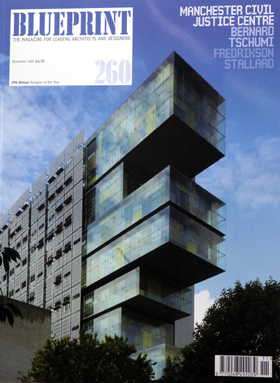Despite their status as outsiders, urban explorers have much more in common with architects and property
developers than they might think, says Mark Chalmers
It is often thought that urban exploration began in Britain in the mid-Nineties with Jack and
Megan of the Milk Crate Gang, who investigated the abandoned tunnels of Glasgow's
Low Level railway system. Of course, the Milk Crate Gang were among the first to upload photos of
their 'explores' on to a website and, in doing so, built a worldwide audience. Their downfall was a sensationalist newspaper
article, which effectively put them out of business. In more recent years, the urban exploration (UE) community has
grown around web forums such as 28dayslater in Britain, and UER in Canada.
The term 'urban exploration' is a recent one, but the urge to explore buildings that have fallen into disrepair is
long-standing. John Harris in his book No Voice From The Hall, recounted his explorations
of abandoned country housed during the years following the Second World War and noted that the key to exploration
is serendipity as much as curiosity. You have to be luck to get in to some abandoned sites, not just persistent.
The pattern of exploration has developed over time - and the fact that exploration should become an urban rather than
rural phenomenon reflects social change. Harris took advantage of the abandonment of stately homes
when punitive death duties were imposed on the owners. Today, the Care In The Community programme in the NHS has released
lots of patients into wider society; it has also freed up many asylums for exploration. Likewise, globalisation and the
de-industrialisation of Western countries means that many factories now lie derelict.
Yet beyond the adolescent chatter of those who style themselves 'shadow ninjas' and get their thrills by transgressing, UE
serves a real purpose. The more thoughtful explorers record buildings which heritage bodies have chosen not to spend resources
on. The aesthetics of derelict buildings have always attracted photographers, who are drawn to capture something of their
transience and decay. The archive of images that explorers take has created a vast database and, as a result, have had
to become architecturally literate. Unlike architects, developers or nimbies, however, they are not partisan.
They do, however, run risks which were summed up by the architectural writer Reyner Banham in
A Concrete Atlantis. To find out more about the grain silos at Buffalo in New York State, Banham
explored their derelict shells and nearly came to grief when he crashed through the plywood cover of an open culvert. As he
extricated himself, he reflected on his folly: "I remembered the fate of the Chicago architectural photographer
Richard Nickel, lying dead in the ruins of the Schiller Theatre for weeks before his body was discovered."
The other appealing aspect of UE is the thrill of reaching places barred to the general public. As Banham
adds, "the sense of distance from help and civilisation was exhilarating rather than depressing; the presence of the
huge abandoned structure produced a mood more elegiac than otherwise."
Yet the urban explorer is not a complete outsider. The contrast between the besuited developers of abandoned
buildings and the spooks in hoodies who creep through them couldn't be physically more marked. Yet the urban explorer -
following the example set by the Oxygen Thief, Turbozutek and Simon Cornwell -
and the property capitalist share a common goal. Neither are architects, but both take an interest in old buildings.
Furthermore, both can read buildings analytically, a skill often wholly lacking in non-architects. Most tellingly, both
camps are ruled by what economist David Ricardo dubbed the Law of Diminishing Returns.
Ricardo maintained that the economy generally moves towards a standstill. In the free market, opportunities
to make easy money are taken first, since simple projects on prime sites ensure large returns. However, once the market
progresses, and the uncomplicated propositions have been building out, then you're left with difficult projects. At this point,
the anticipated returns diminish due to increased costs, and the economics of the development move towards the static state
where cost equals return. So sometimes an abandoned building is left alone until conditions improve.
Of course, derelict buildings are never completely abandoned. Despite palisade fences, security guards and motion-sensing
CCTV cameras, the urban explorers seek them out. Using milk crates as step ladders, they tread lightly, recording these
places using digital cameras, then sharing their finds on the web. Recently, explorers have been stymied by the property
boom we've experienced over the past years, which means that developers have been snapping up their haunts; the corollary
of this is that recession is a good thing. Economics binds the urban explorer to the developer as much as it forces them
apart.




